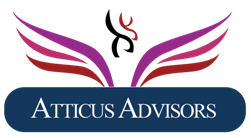In the age of digital acceleration, one of the most significant transformations reshaping the modern workplace is the emergence of the hybrid workforce—a collaborative ecosystem where humans and artificial intelligence (AI) work side by side. This isn’t science fiction anymore. It’s a reality playing out across industries, boardrooms, and startups.
Rather than framing AI as a threat to jobs, leading organizations are recognizing it as an opportunity to enhance human capabilities. By integrating AI into business workflows, companies are unlocking new levels of productivity, creativity, and innovation—ushering in a future of work that is both high-tech and deeply human.
What Is a Hybrid Workforce?
A hybrid workforce doesn’t just refer to remote and on-site teams—it now also includes AI systems, bots, and digital assistants operating alongside human employees. In this model, AI handles tasks that involve data crunching, automation, prediction, or pattern recognition, while humans bring emotional intelligence, ethical judgment, strategic thinking, and creativity to the table.
This symbiotic relationship creates a new kind of agility. It enables businesses to scale operations, reduce costs, and improve decision-making, all while empowering workers to focus on what they do best—solve problems, lead teams, and innovate.
Why Is This Shift Happening Now?
Several key trends have accelerated the adoption of hybrid workforces:
1. Explosion of AI Technologies
Advances in machine learning, natural language processing, and computer vision have made AI more accessible, reliable, and powerful than ever before. Tools like ChatGPT, Google Gemini, and Copilot are becoming standard in creative, coding, and knowledge-work environments.
2. Pandemic-Driven Digital Transformation
The COVID-19 pandemic forced companies to rethink how and where work happens. Remote work surged, automation replaced manual workflows, and leaders realized digital tools weren’t optional—they were essential.
3. Labor Shortages and Skills Gaps
In many industries, there’s a growing shortage of skilled talent. AI fills gaps in productivity and allows existing teams to operate more efficiently, especially in roles like customer service, data analysis, logistics, and manufacturing.

Real-Life Use Cases: Where Humans and AI Collaborate
The hybrid model is already transforming work in meaningful ways:
- Healthcare: AI algorithms assist radiologists by flagging anomalies in medical imaging. Doctors then interpret results within a clinical context, combining machine precision with human empathy.
- Finance: AI systems monitor real-time transactions for fraudulent activity. Human analysts then review flagged cases to make final decisions, ensuring fairness and accountability.
- Retail & E-commerce: AI curates personalized product recommendations and handles FAQs through chatbots. Human sales teams focus on complex customer interactions and relationship building.
- Recruitment & HR: AI filters thousands of resumes and highlights promising candidates, while HR professionals conduct interviews, assess cultural fit, and make final hiring decisions.
The Benefits of a Hybrid Workforce
Increased Productivity
AI can handle 24/7 monitoring, reduce administrative overhead, and automate repetitive tasks—freeing up human talent for high-value work.
Improved Decision-Making
AI excels at analyzing massive datasets and offering data-driven insights. Humans can then interpret and contextualize these insights with creativity and strategic foresight.
Cost Optimization
While there are upfront investments in AI, the long-term operational savings—through reduced errors, faster processing, and better resource allocation—are substantial.
Employee Empowerment
When deployed ethically, AI tools can reduce burnout and help employees focus on tasks that are more engaging and purpose-driven.
Challenges on the Road Ahead
Of course, adopting a hybrid workforce isn’t without its hurdles:
Ethical and Bias Concerns
AI can perpetuate or even amplify existing biases in data, especially in hiring, law enforcement, or finance. Transparent AI governance is essential to prevent harm.
Workforce Resistance
Fear of job loss or dehumanization can lead to resistance among employees. Clear communication, transparency, and inclusion in the transition process are key to gaining buy-in.
Skills and Training Gaps
Many workers will need to learn how to work with AI—understanding how to use, supervise, and even question AI outputs. Upskilling and digital literacy are critical.
Preparing for the Future: What Leaders Must Do
To harness the full potential of the hybrid workforce, organizations must proactively invest in:
- Reskilling and Upskilling Programs: Equip your team to thrive in an AI-augmented world. Offer training in digital tools, data literacy, prompt engineering, and critical thinking.
- Ethical AI Frameworks: Build AI systems that are transparent, explainable, and accountable. Appoint ethical review boards and ensure fairness in algorithms.
- Human-Centric Culture: Don’t lose the human touch. Celebrate soft skills—empathy, adaptability, and leadership—as vital traits in a hybrid future.
- Strategic Planning: View AI not just as a tech upgrade, but as a strategic partner in achieving long-term growth, innovation, and resilience.
Final Thoughts
The rise of the hybrid workforce signals a new era in the world of work—one where the speed and scale of machines combine with the intuition and creativity of humans. Instead of fearing AI, we must learn to collaborate with it. The future of work is not about man vs. machine. It’s about man with machine.
